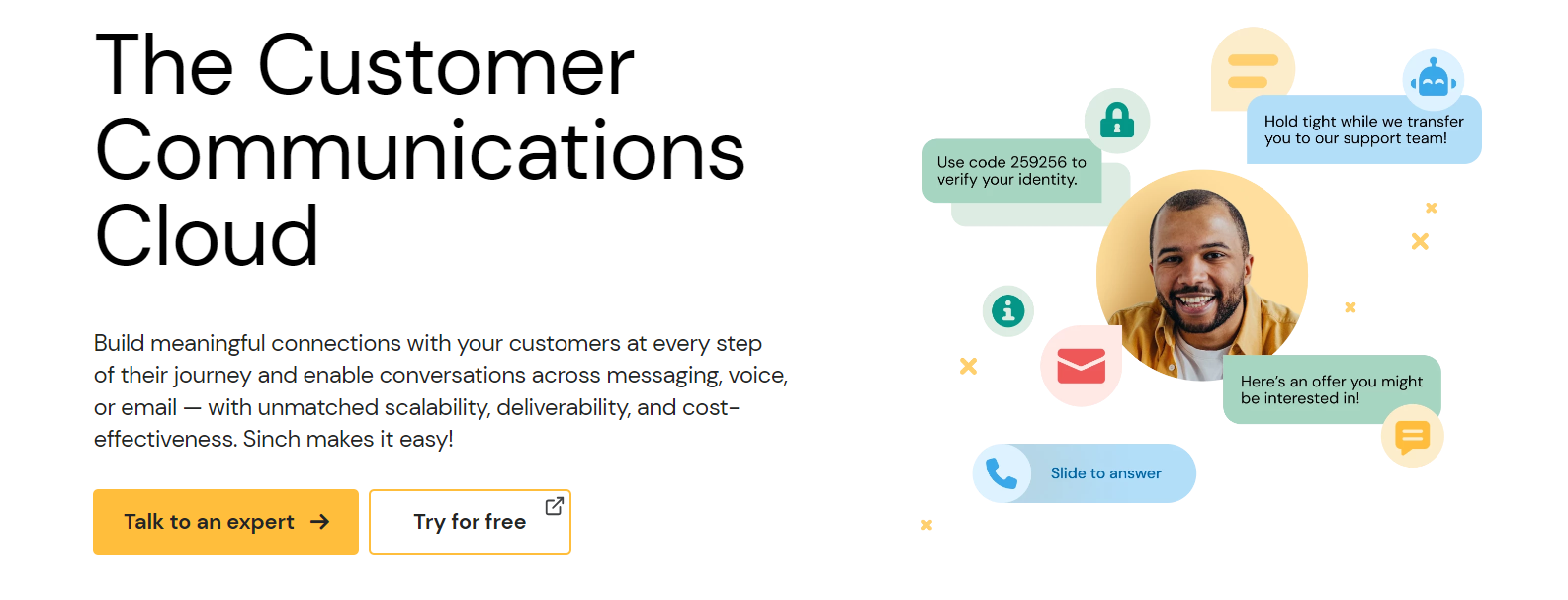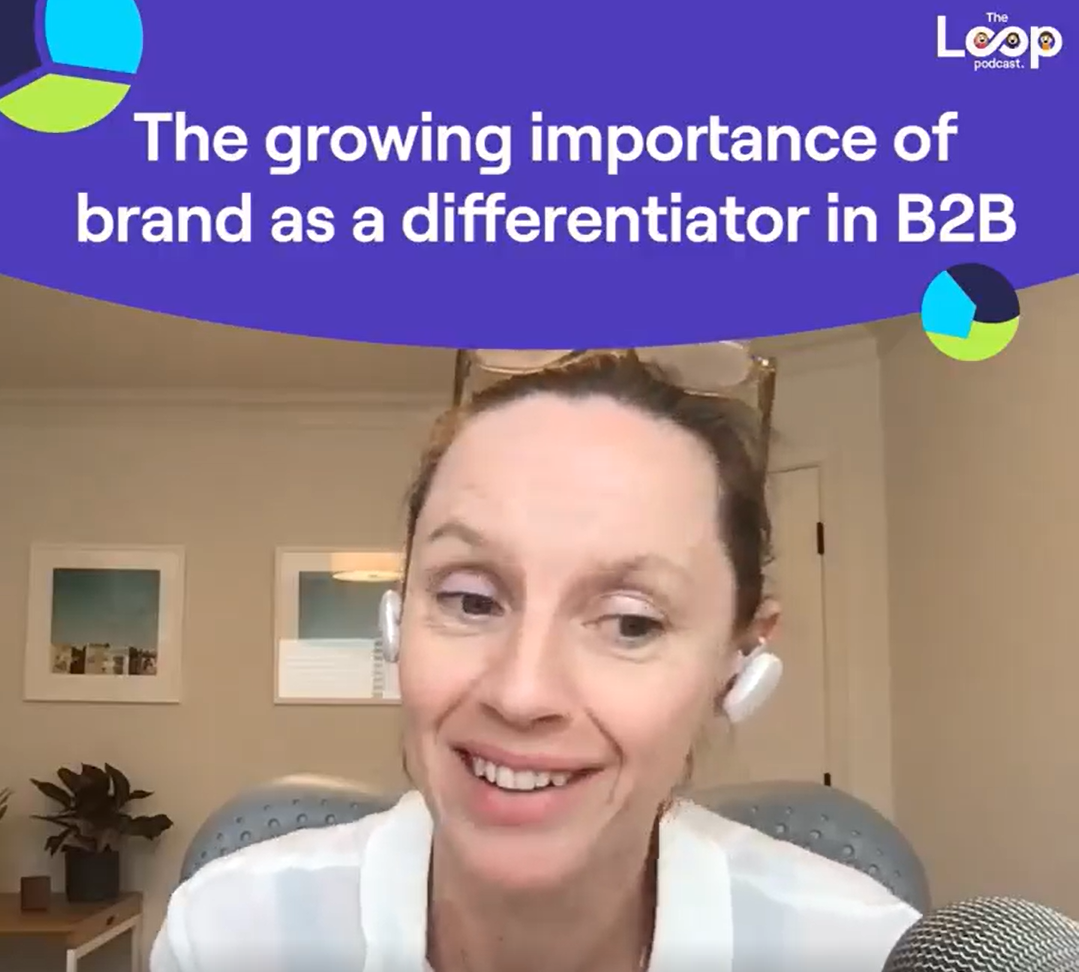Positioning Leader Spotlight
Meet Gwen Lafage, VP Marketing, Global Brand and Content, Sinch
Gwen Lafage has lived and breathed branding and positioning from both sides—inside an agency and inside a software giant. She joined Sinch in 2021 to take on the enormous task of driving the company’s global brand after multiple acquisitions. Today, Sinch owns the Customer Communications Cloud category with $2.6B in annual revenue.
Gwen is a “Top Brand Strategy Voice” on LinkedIn and a frequent guest on expert podcasts. Follow her for down-to-earth advice on brand building.
When did you know you wanted to get into marketing?
I knew I wanted to get into marketing very early on! Back when I was just a 19-year-old student in business school, marketing had already captured my attention and imagination. I had always been drawn to the world of advertising—the creativity and the ability to tell stories to influence and shape people's perceptions and decisions through concepts, words, and images. I started and spent most of my career in creative agencies.
I have also always been fascinated by people—understanding people on a deeper level, the psychology behind how people think, feel and act, and how you can influence it.
Marketing also felt like the most fun path one could follow in business! Can you really get paid for coming up with ideas and bringing them to life?
What are the keys to positioning leadership?
“The key to successful positioning is clarity and simplicity. Your audience should easily grasp it.”
Positioning is framing what sets you apart from your competitors and relevant to your audience. It's all about defining your unique point of view, your areas of expertise that address your audience's needs. Then, you craft a compelling story that you want to be associated with and remembered for. To achieve this, you need 3 main ingredients:
A thorough understanding of your identity and your future direction, firmly rooted in your products and their primary benefits.
Deep knowledge of your competitors, including what distinguishes you from them.
A clear understanding of your audience and the issues you resolve.
The key to successful positioning is clarity and simplicity. Your audience should easily grasp it. It not only helps you stand out but also forms the basis for a compelling narrative.
What is breakthrough or exciting about Sinch’s positioning?
Sinch's rapid growth, driven both by organic expansion and strategic acquisitions, made it critical for us to establish a unique, cohesive narrative. We needed to answer a crucial question: why did we unify as 'Sinch,' and how does this transformation empower us to better address our customers' challenges?
ZOOM Marketing engaged internal leaders as well as a diverse array of our customers across our product range to test a framework of ideas—from the problem Sinch could solve to how we could uniquely solve it. We recognized the real struggle is connecting with customers in today's omnichannel digital landscape. Multiple siloed channels, disjointed tools, and fragmented communication approaches have left the customer experience far from seamless.
This presents a critical issue that Sinch is uniquely positioned to resolve as the single comprehensive partner for all our clients' communication needs. We can simplify and enhance communications: we directly power and simplify customer connections at every step of their journey, across their channels.
The most interesting aspect was the conversations with our customers, allowing us to pinpoint our distinctive strengths and understand why they choose to work with us. Equally exciting was the clear articulation of our identity as The Customer Communications Cloud and witnessing how strongly it resonated with them.
What are the keys to rolling it out successfully?
First, secure internal support! Positioning is a strategic project that must begin from the highest levels of the organization but also be embraced throughout all levels. It's crucial for global leadership to champion the project and present it internally. Equally important is ensuring that everyone, especially people in sales and marketing, comprehends it fully. They are the individuals who will be delivering the narrative, recounting the story daily to prospects, partners, and clients.
Maintaining consistency in the narrative and embedding the positioning across all activities and touchpoints, from sales materials to your website, from internal communications to marketing campaigns, is pivotal for ensuring it sticks in people's minds. Remember, this isn't a one-time effort; it may continue to evolve. Education and bringing the positioning to life are the keys to success.
What are your biggest lessons working on the agency side vs. the corporate side?
“In-house, you often face the need for education and stakeholder management... from the CEO to department heads. That’s the hardest part!”
Working on branding and positioning in agency versus in-house is very different—both have their challenges and advantages. When you work in agencies, you have the experience and the understanding of effective positioning or marketing strategies. You are the experts and follow a well-known process. You understand the steps to take to get to an effective positioning, but you also have to follow the requirements and ideas from the client—it is not always easy to push back for what you know is right.
In-house, you often face the need for education and stakeholder management. You need to explain the importance of positioning, involving various stakeholders in the process, from the CEO to department heads. There is a lot of coordination needed. There are also a lot of pre-conceived notions that can be difficult to debunk. In-house, the work doesn't end with the final positioning deck—that is actually the beginning! You then must ensure the positioning is consistently rolled out, understood, and integrated into the company's culture, making ongoing education and communication critical for long-term success. That’s the hardest part!
Whose positioning do you admire and why?
In the B2B tech world, I admire companies who have managed to successfully create their own category and establish themselves as its leader. Companies like Snowflake, The Data Cloud; or, Gong, Revenue Intelligence, are great example of powerful category creation leading to business success. Combining excellent products, with the power of a clear, consistent narrative and brand identity have propelled them to disrupt traditional markets, shaping their respective industries while demonstrating strong growth and leadership.





